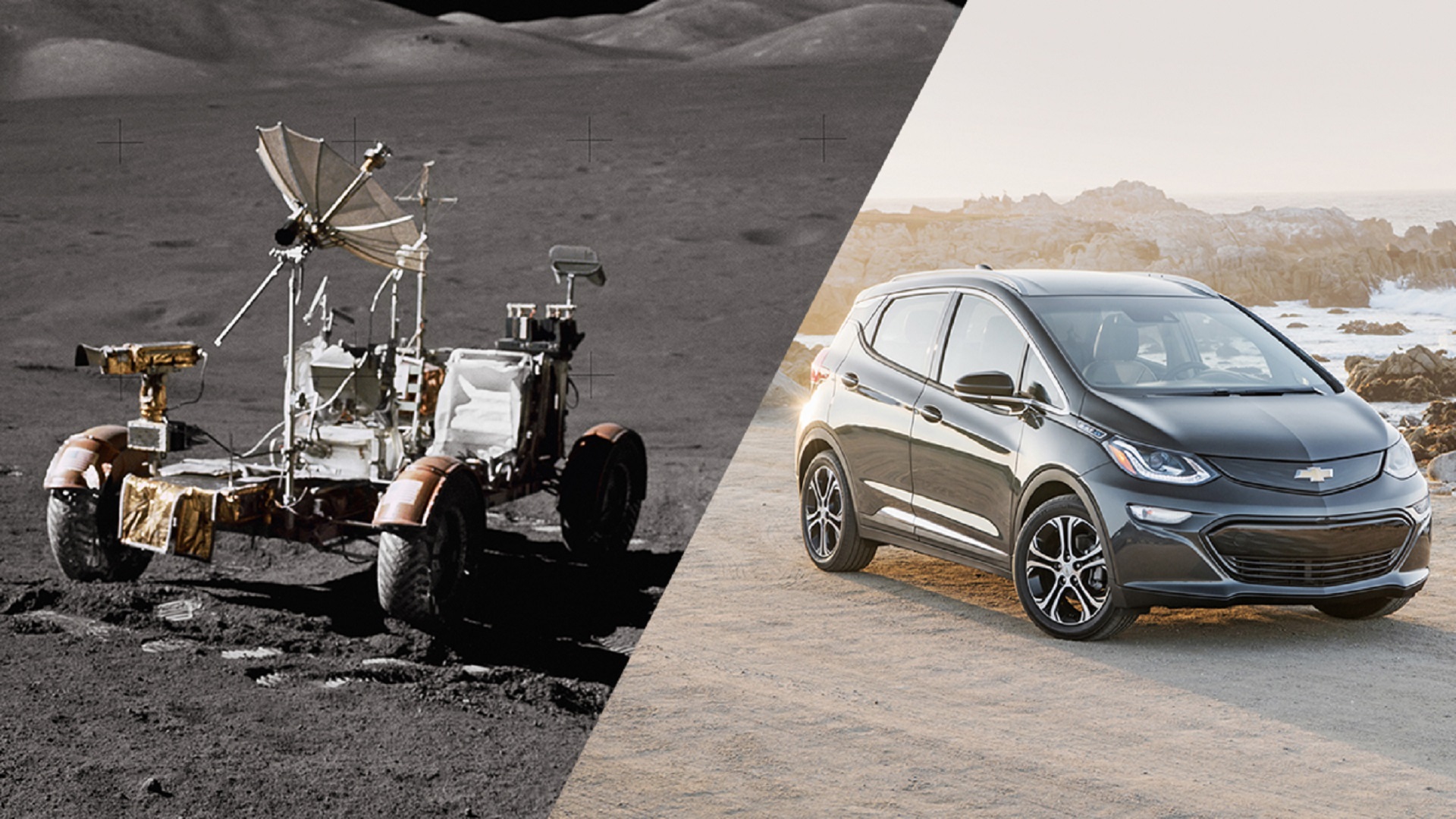

Contrary to our original predictions, the Chevrolet Bolt is actually selling rather well for an electric car. But apparently, there has been some confusion between the Bolt and another electric car that General Motors played a significant role in designing nearly half a century ago: the lunar rover. That must be why Chevy has taken steps to clarify the Bolt’s easily mistaken identity by releasing this helpful comparison chart on the 48th anniversary of Neil Armstrong’s first steps on the moon.

Looking at the two vehicles side-by-side, it’s easy to see how a modern looking hatchback could be mistaken for a two-seat convertible designed to be driven on the moon. Fortunately, decades of technological enhancements have made the Bolt better than its astronautical predecessor in nearly every way. The Bolt’s range has increased to 238 miles from the 1971 model’s 57 miles. Power has also improved in the Bolt—which has 200 horsepower, compared to a total of one—and the Bolt is liquid-cooled rather than air0cooled. (Though how, exactly, does air cooling work on the airless surface of the moon?)
These improvements allow the Bolt to achieve a top speed of 92 miles per hour, compared to 8.7 in the lunar rover. Admittedly, the surface of the moon is not quite as smooth as an interstate highway. That’s why the Bolt gets 17-inch self-sealing tires rather than the 32-inch woven steel tires that were optimized for the unpaved lunar surface.
Extending the length of the Bolt by 3.5 feet—as well as eliminating the need for bulky space suits by operating on a planet with a breathable atmosphere—allowed Chevy to increase the passenger capacity to five rather than the rover’s two-person maximum. Unfortunately, the Bolt weighs a massive 3,563 pounds, which is many times greater than 492 for the rover. Such is the price of progress, as well as not needing to be shot into space by a Saturn V rocket.
And since a standard OnStar communication unit will interface with the 4G LTE network that didn’t exist in the 1970s, the rover’s large high and low gain antenna array was eliminated.